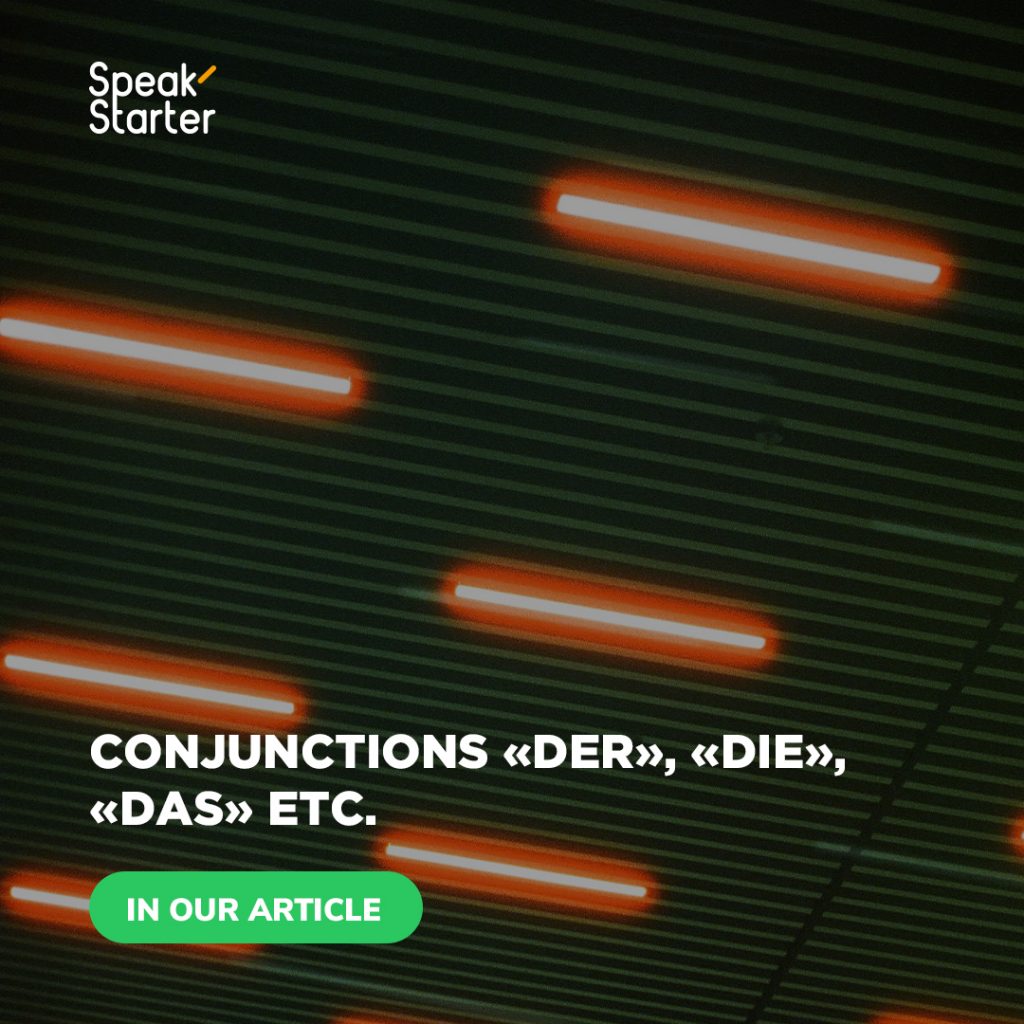Previously, we talked about сonjunctions that bring together the main and appendage proposals. One such union is the union word “which”/”which”/”which” etc.
It looks like this:
Das ist die Frau, die du kennst is the woman you know;
Wo ist das Buch, das ich gekauft habe? – Where is the book I bought?
These words are expressed in certain articles. Depending on the genus (masculine/female/average/multiple) of the noun name to which the union word belongs, we use a particular article that corresponds to that genus.
When using this union, the verb is moved to the end of the sentence.
Allied words do not have to be in the Nominativ case, but can also be in all other cases:
Akkusativ: der Satz, den ich lese – the sentence I read;
Dativ: der Mann, dem ich helfe is the man I help;
The dative case has many different numbers, and the union word will look like this:
Meine Freunde, denen ich danke are my friends to whom I express my gratitude.
Genetiv is a complete exception:
Maskulin (der): der Freund, dessen Schwester ich kennen is a friend whose sister I know;
Neutrum (das): das Kind, dessen Vater wir kennen is a child whose father we know;
Feminin (die): die Frau, deren Auto wir sehen is the woman whose car we see;
Plural (die): die Autoren, deren Buch ich lese are the authors whose book I read.
Such alliances can be combined with pretexts:
Die Frage, auf die ich antworten muss is the question I have to answer.
If the verb requires a certain pretense, such as “antworten auf”, then it should not be missed. Here pretexts and unions behave the same way as in the Russian language;
Die Leute, mit denen ich spazieren gehe are the people I go out with;
It’s a pretty simple topic. Suggestions with pronouns in the role of unions, as well as in Russian, are used very often.

